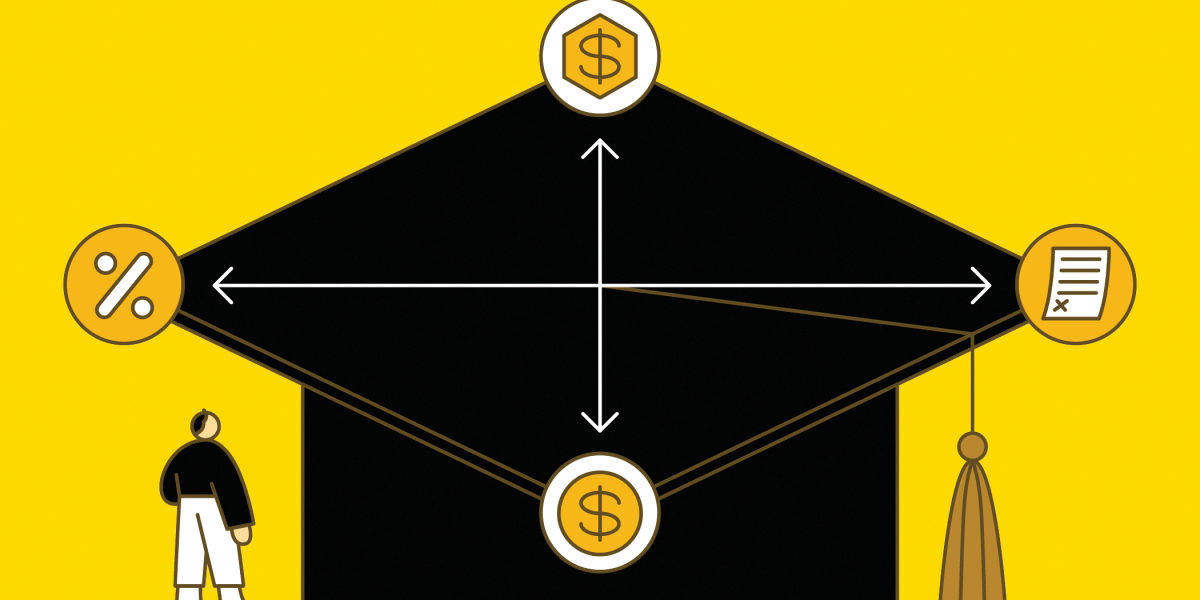Can the blockchain reduce student loan debt?
Robin Kim graduated from New York University in 2015 with a degree in economics. He borrowed more than $100,000 from the US government and quickly became locked in to high interest rates. He has been trying to pay off his student loans ever since.
Eventually, Kim refinanced through a private lender to lower the interest rate, but he wondered if there was another way out. “I was paying $1,500 a month, every month, to pay off this loan,” he says. “That amount could have been better spent elsewhere.”
A former engineer at Coinbase and a cofounder of Gallery, an online platform people can use to curate and share their NFT collections, Kim had thought of selling cryptocurrency to pay off his loans. But if he did that, he’d have to pay taxes on any profit he made.
Instead, Kim took out a loan through a lending platform called Aave, built on the Ethereum blockchain. He used that money to pay his debt and is now working on paying off the new loan.
How do DeFi loans work?
Decentralized finance is a catch-all term for blockchain applications used to create complex financial products. Since DeFi loans aren’t tied to the traditional banking system, they sometimes have lower interest rates, do not affect the borrower’s credit score, and could in theory be held indefinitely.
DeFi loans can be based on any digital currency. That includes stablecoins, which are cryptocurrencies whose value is tied to external sources like the US dollar. To take out a DeFi loan, borrowers must first deposit collateral in the form of crypto assets worth more than the amount they wish to borrow. How much more is based on a percentage set by the lender. It’s a bit like putting down $100 in one currency to borrow $75 in another.
The borrower receives the loan in, for example, stablecoins, which can then be exchanged for US dollars. That money is used to pay off a debt, and then the borrower eventually pays off the DeFi loan to reclaim the collateral.
With the benefits of DeFi, however, come risks. A borrower’s collateral can be liquidated if its value drops below the value of the loan. Bitcoin, despite having more market liquidity than any other cryptocurrency, is still highly volatile, fluctuating in value by an average of 3% per day. If prices dip too much, borrowers lose their collateral. (Though if the price of the collateral appreciates, that risk is lower.)
Stablecoins have also been the target of government scrutiny, given the risks of an unregulated stablecoin market to the global economy. Regulators have warned that potential fluctuations in value could lead to widespread losses for stablecoin holders and destabilize the entire financial market.
In November 2021, a US government working group recommended that Congress require stablecoin issuers to be subject to the same regulations as banks. In February, US Representative Josh Gottheimer, a New Jersey Democrat, announced the Stablecoin Innovation and Protection Act, which would issue government-backed insurance for stablecoins. These steps would reduce the risk of volatility, but a government-backed coin would no longer be decentralized.
Another major risk is that smart contracts, the automated agreements underwriting loans on the blockchain, are not infallible. Smart contracts are executed on the basis of predetermined conditions written into code. That code is written by humans, and mistakes, bugs, or hacks could ensnarl borrowers.
A matter of trust
Borrowers must therefore place a good amount of trust in the platform issuing their loan. More prominent platforms can take security measures to reduce the risk. For example, the platform Compound Treasury’s community has hired security firms to evaluate its loan protocol to make sure its code is secure.
“Even so, it’s really up to the end user, the developer, and the borrower or lender to really assess the stability and riskiness of the smart contract,” says Reid Cuming, Compound’s vice president and general manager. “I think we’re still in a state where there’s a lot of room for improvement here.”
Anyone who knows your wallet address can see how much you borrowed.
DeFi platforms also provide little privacy to borrowers, meaning anyone who knows your wallet address can see how much you borrowed and when.
Crypto skeptic Molly White says this divides users into three camps: people who protect their privacy at the expense of being able to use the major crypto platforms, people who give up some privacy to use them, and people whose identities and crypto wallets are publicly linked.
As the choice of platforms comes down to liquidity versus privacy, many of the purported benefits of decentralization—privacy, anonymity, and independence from corporations—no longer apply. And managing these risks requires technical expertise that most borrowers simply don’t have.
On one hand, White says, some believe these platforms are making financial transactions, once the domain of experts, available to anyone—“but on the other hand, people are getting sucked into making risky decisions that they don’t have the knowledge to be able to make responsibly.”
To support MIT Technology Review’s journalism, please consider becoming a subscriber.
Kim remains optimistic. He compares the situation to the early days of the internet and says that even with the risks, DeFi has the potential to go mainstream. “I think DeFi will meet parity with centralized finance … just because of the transparency and openness of it,” he says. “The ecosystem does have to mature, but I think that’s the case with any emerging technology.”




